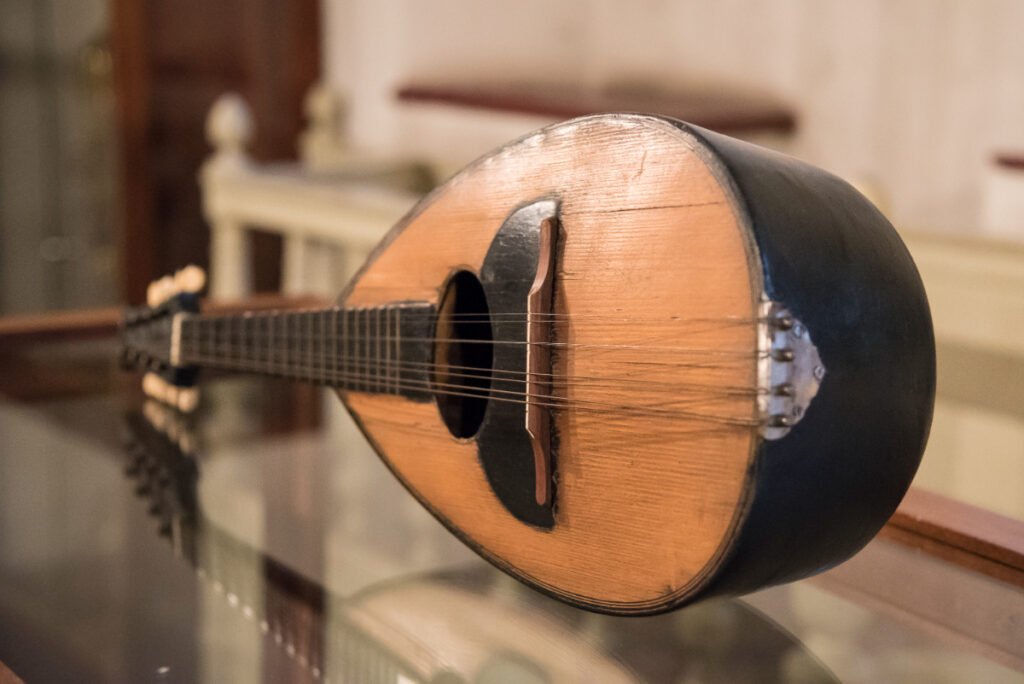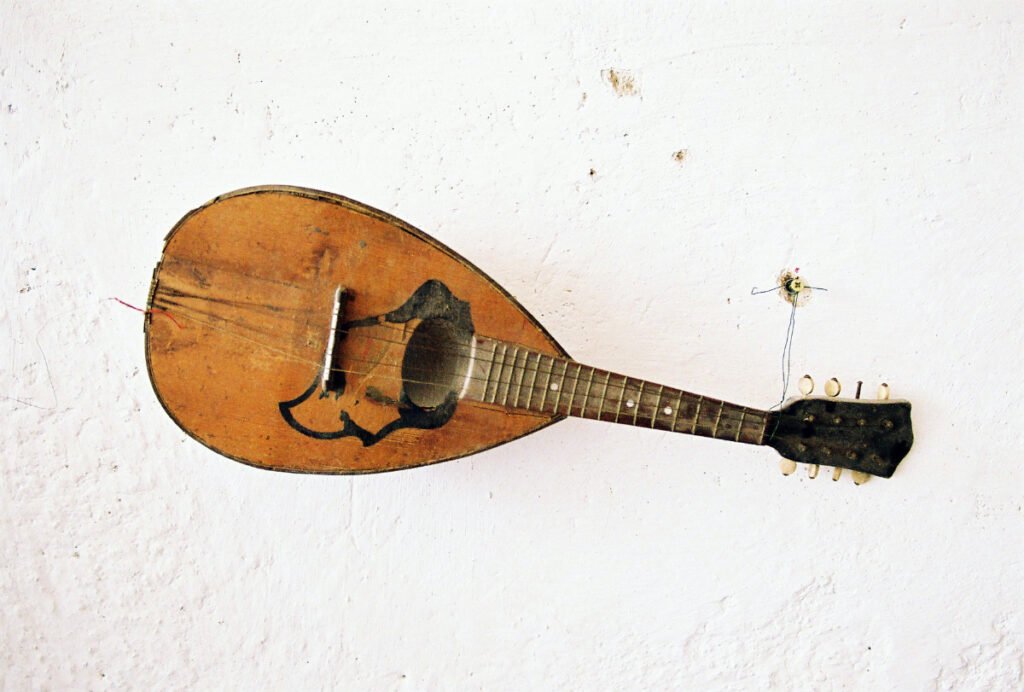Mandolin is a really interesting instrument not only to play but to see, too! That stylish body and shiny surface can easily lure anyone to buy one. But it’s not only the new mandolins that are special; even the vintage ones are quite precious and in demand!
But what makes them so popular among antique lovers? This detailed guide will explain how to find out if an old mandolin is valuable or not based on its type, age, materials, and brand. You will also get expert tips on finding the value of your own aesthetic antique mandolin!
Takeaways
- The unique bowl-back mandolins are the oldest and, hence, are rare and valuable. You can also pick A-style and F-style mandolins for better value.
- Branded mandolins with exotic woods will fetch you extremely well returns. Of many popular brands, Gibson, Martin, and Washburn are one of the most in-demand brands for mandolins.
- Look for pearl inlays, ivory, silver wire, or tortoise-shell inlays on your mandolin’s body to hike its price.
- Check for any repairs or restoration on the instrument, as it can devalue your model.
What Does an Antique Mandolin Look Like?

To be honest, an old mandolin wouldn’t have a much different shape than a modern one. But it’s their intricate woodwork and exotic woods that make them precious.
You can also spot these features for proper identification:
- Round, bowl-shaped, or tear-shaped backs
- Made with exotic woods like Rosewood, Solid Maple, Spruce, and Mahogany
- Six or four courses of gutstrings
- 315-330 mm scale length
- Ornate inlays and decorations (rare pearl, ivory, silver wire inlays)
- Carving and scrollwork on the body and headstock
- Floating bridges and ornate tailpieces
A Sneak Peek Into the History of Mandolins
Although the history of mandolins dates back to way before 1500 BC, the refined models became popular around the late 17th and early 18th centuries in Italy. Like lutes, the earliest mandolins had a round back with six pairs of gut strings.
Then came the Neapolitan mandolin in the 18th century with a 315-330 mm scale length. With tear-shaped backs and six courses of gut strings, these mandolins were more popular among the upper class. But something had to be done to those large backs.
So, makers introduced flat-backed and carved-top mandolins in the 19th century. These mandolins had eight metal strings. And some latter models even had volume and tone control knobs. But these didn’t have a loud, projected sound like before!
In later years, many hybrid mandolin designs were introduced. These instruments were mass-produced as they were popularly used by folk, bluegrass, and rock musicians. But compared to older mandolins, these finished ones aren’t much valued in the antique market.
3 Types of Old Mandolins and Their Worth
1. Bowl-back Mandolins (Tater-bug mandolins)
Just as its name sounds, these mandolins can be spotted with their rounded, bowl-shaped back. This back is usually made from multiple strips of wood, producing a mellow sound. You can also spot a short neck with a floating flat bridge and an oval sound hole.
Usually, these old, hand-carved mandolins cost around $40 – $100. But, if it’s a branded model, it can cost from $300 to $1,000, provided it’s in good condition.
2. Flat-back Mandolins
These newer mandolins feature a flat back with a larger body and longer scale length. You can find these with mahogany, spruce, or rosewood with eight strings. But because of their new make and a less punchy sound, common flat-back mandolins will only fetch around $30 – $70.
3. Archtop Mandolins
These mandolins are a blend of bowl-back and flat-back mandolins. You will also see f-holes and a floating bridge on these, too. And since archtop models are less common than other types, you can easily fetch up to $500 – $1,000 for branded, functional models.
7 Factors for Vintage Mandolin Identification and Pricing
The market price of a vintage mandolin can vary based on different factors, including its condition, functionality, age, type, wood type, shape, and brand. Usually, common models can cost around $50 – $200, while branded ones can go as high as $5,000 or even more!
Below are the seven most important factors you must consider while identifying and appraising a vintage mandolin!
1. Old Mandolin’s Age & Serial Number

If your mandolin is really old, say about eighty or a hundred years old, and it’s still playable, then you can make good money with it. But how would you know its age?
Well, the first answer is the serial number! You will usually find it impressed into the wood inside the soundhole or printed on a paper label glued to the wood. But if you can’t see the number or name, these clues will help you age your model:
The 17th & Early 18th Century Mandolins
You can spot these with their round backs, small body, and intricate inlays. There may be ornate sound hole rosettes made of parchment or wood. You’ll also find five or six courses of gut strings which were mostly played with fingers.
The Late 18th Century Mandolins
This era had tear-shaped mandolins with four courses of metal or gut strings. These mandolins were highly decorated with tortoiseshell molding and floral paintings. You can also see mother-of-pearl, tortoiseshell, or gold alloy inlays on the soundboard.
Some models also had a flat-back body, but these didn’t produce a high-quality sound and hence were less common and preferred.
The 19th Century Mandolins
You can find different hybrid mandolin designs from this era, such as a mandolin-banjo. Metal strings, intricate inlays, and decorations on the body and headstock were also popular in this era. You can also see a pluck guard in some models.
The Early 20th Century Mandolins
This period brought the iconic A-style and F-style mandolins, which you can identify with their tear-shaped and pointy bodies. Although newer, these mandolins can cost up to $500-$600. But the branded models can even cross the $5,000 mark.
2. Old Mandolin Styles

As we saw above, different types or styles of mandolins have different features and prices. But apart from the shapes, there are two styles of mandolins, which have been quite valuable since the 1900s.
- A-Style Mandolins: You can identify these with their simple, less carved teardrop-shaped body with either flat or slightly arched back. Look for f-holes on the body and an oval sound hole in these. The common price for these mandolins is around $100 – $600.
- F-Style Mandolins: You would see a fascinating ornamental scrolled body with one or two points on the lower body in F-style mandolins. These also feature f-holes, a decorative headstock, and an arched top and back. You can estimate a price of $100 – $700 for common models.
For more clarity over the prices, check out this table!
| Mandolin Style | Price for Common Models | Estimated Price for Brandes Models |
| Bowl-back | $40 – $100 | $300 – $1,500 |
| Flat-back | $30 – $70 | $60 – $120 |
| Archtop | N/A | $200 – $2,500 |
| A-Style | $100 – $600 | $900 – $3,500 (up to $8,000 for brands like Gibson and Martin) |
| F-Style | $100 – $700 | $1,000 – $9,000 (for brands like Gibson and Martin) |
If you see an old mandolin with an unusual shape (apart from the common ones), it can be really valuable and demanded.
3. Antique Mandolin Woods
Vintage mandolins are not valuable collectibles just because of their age and shape; they also have exotic, high-quality woods that are highly precious today!
But a mandolin isn’t entirely made of single wood. It comprises different components like the back, sides, fingerboard, and top, which are made of one or more kinds of wood. Let’s break it down for more clarity:
- Top: The top or upper surface of the mandolin is where you can see the soundhole, pickguard, and bridge. Vintage mandolins with Spruce tops are pretty valuable.
- Sides and Back (the Body): The body is usually made of strong hardwood, such as maple, rosewood, and walnut. While maple bodies are common, rosewood or Brazilian rosewood bodies are rare and expensive.
- Fingerboard or Neck: You can see ebony, maple, rosewood, and Brazilian rosewood necks in vintage mandolins. Pick the one with ebony or rosewood for the best value!
Look for pearl, ivory, silver wire, or tortoise-shell inlays on your mandolin’s body to hike the price.
4. Vintage Mandolin Brands to Look For

A branded mandolin is no less than a treasure! Why? Because it can literally fetch you returns of thousands of dollars. Among many antique mandolin brands, look for Gibson, Viniccia, Martin, and Vega, as they are the most sought-after!
Check out this quick table to find an estimated price of branded mandolins:
| Vintage Mandolin Brands | Key Features | Estimated Price |
| Gibson | “Gibson” logo on the headstock, Hand-carved tops & backs, often with F-holes | $700 – $3,000 (A-Style) $1,000 – $6,000 (F-style) |
| Martin | “C.F. Martin & Co.” logo on the headstock, High-quality materials $600 – $3,500 (A-Style) | $600 – $3,500 (A-Style) $1,000 – $6,000 (F-Style) |
| Lyon & Healy/Washburn | Washburn” or “Lyon & Healy” logo on the headstock, Ornate inlays | $100 – $500 (A-Style) $400 – $1,500 (F-Style) |
| Vega Company | Vega” or “Vegaphone” logo, Unique cylinder-shaped back on some models | $600 – $2,800 |
| Vinaccia | “Giuseppe Vinaccia” stamped label | $300 – $4,800 |
Before picking a mandolin, ensure that it has original parts, finishes, and hardware. Modifications or restorations may decrease its value.
5. Old Mandolin’s Condition
When it comes to musical instruments, they’re valued if they are playable and in good condition. So, look for any signs of wear and tear, like cracks in the back, warping in the neck or fingerboard, and rusted tailpiece or strings.
Moreover, if your mandolin is missing any parts, it can drop its value by 8- 15%, based on the importance of that missing part. And if the mandolin has been repaired, restored, or repainted, it loses almost half or one-fourth of its original value.
6. Antique Mandolin Finishes
You can find vintage mandolins with different finishes such as Shellac, Sunburst, French Polish (Hand-applied Shellac), and Lacquer. Among these, mandolins with Shellac finish are quite old and precious, costing up to $2,500 for common branded models.
Although the Sunburst finish is popular today as well, vintage Gibson mandolins with Sunburst finish can fetch you up to $6,000 – $8,000 depending on your model’s age, material, and condition.
You can identify new models easily with their shiny, scuff, and scratchless Polyester or polyurethane finish.
7. Vintage Mandolin Design
Another feature that will help you identify a real antique mandolin is the design of its sound hole, bridge, and tailpiece. Here are some clues related to these:
- Sound Holes: Antique mandolins with oval sound holes are older and more distinctive than the ones with common round holes.
- Bridges: You can spot floating bridges in old mandolins. These bridges are held in place using the strings’ tension instead of being anchored to the top.
- Tailpieces: If the tailpiece or other hardware on your mandolin is made of brass or bronze and has ornate carvings, it’s likely a vintage one.
How do you identify a bowl-back mandolin?
Bowl-back mandolins can be spotted by their huge, round back made of wooden ribs. These may also have a short neck and a flat, floating bridge. These are one of the oldest mandolins and are quite valuable.
Where is the model number on the mandolin?
You can find the mandolin serial number inside the soundhole, etched into the wood. In very old models, the print or paint might have come off, so look closely for any visible number or letter. You can also look for brand logos and names on the headstocks.
Antique instruments like mandolins are really an irresistible addition to an antique collection. But you need a keen eye to identify features, like their age, material, and shape, to appraise your model. And we hope you get all those deets in this blog!
Vintage pianos are also highly valuable antiques that need a lot of understanding for the right appraisal. But we’ve made it easy for you with our “antique piano identification” blog!
Note: This article is intended for informational, educational, and entertainment purposes only. Some images are illustrative and may not represent actual brands, products, or related entities. All trademarks, product names, brand logos, packaging, and other intellectual property referenced remain the exclusive property of their respective owners. Any brand mentions or references are provided solely for descriptive and educational context and do not imply any formal or commercial association.










